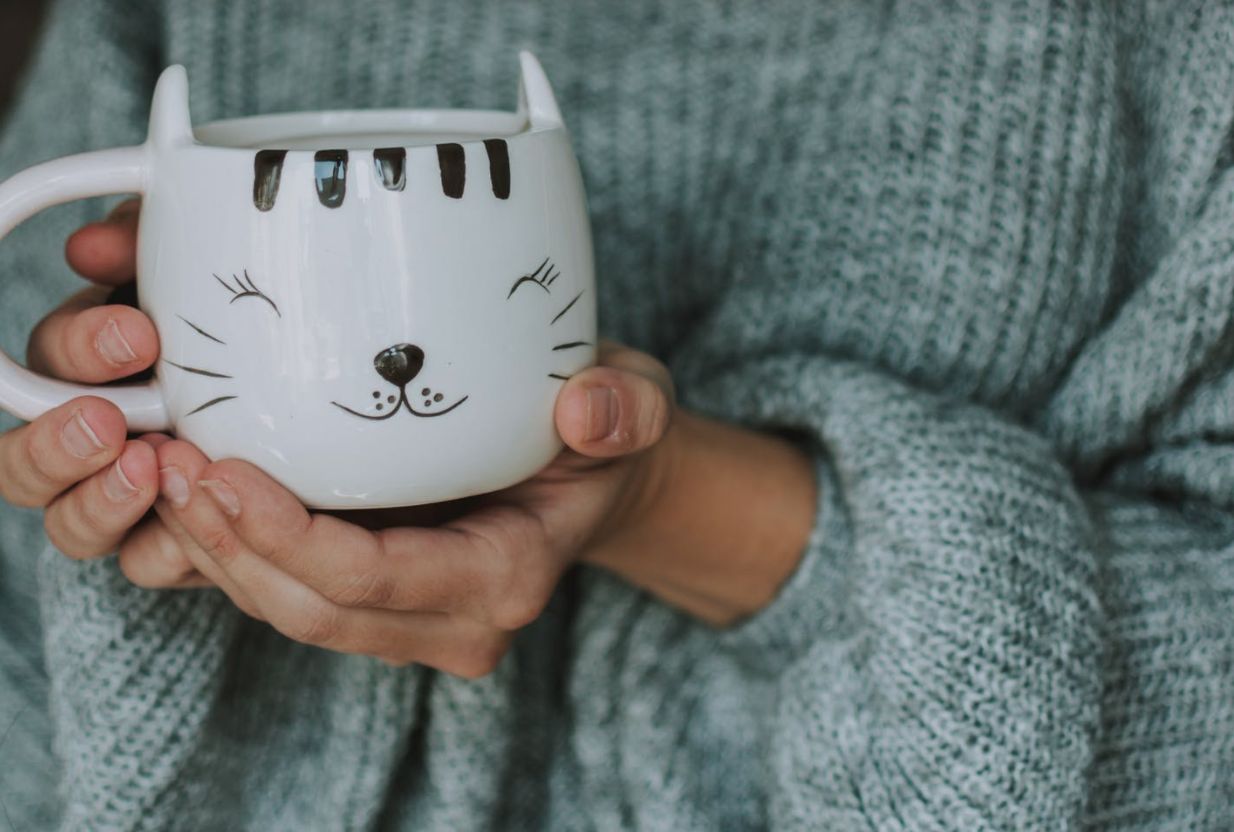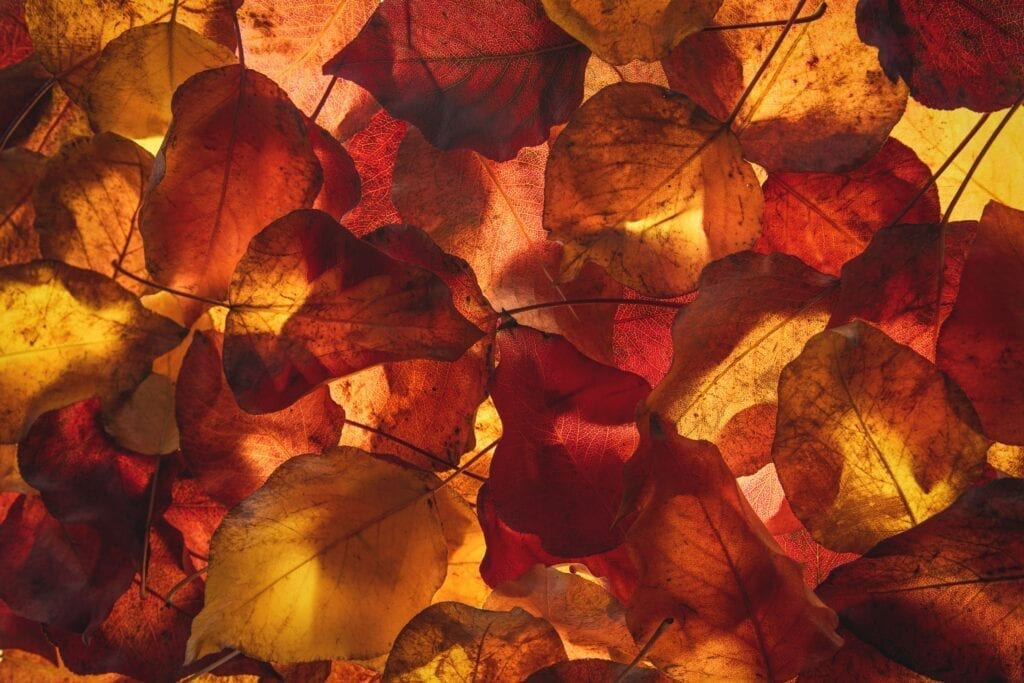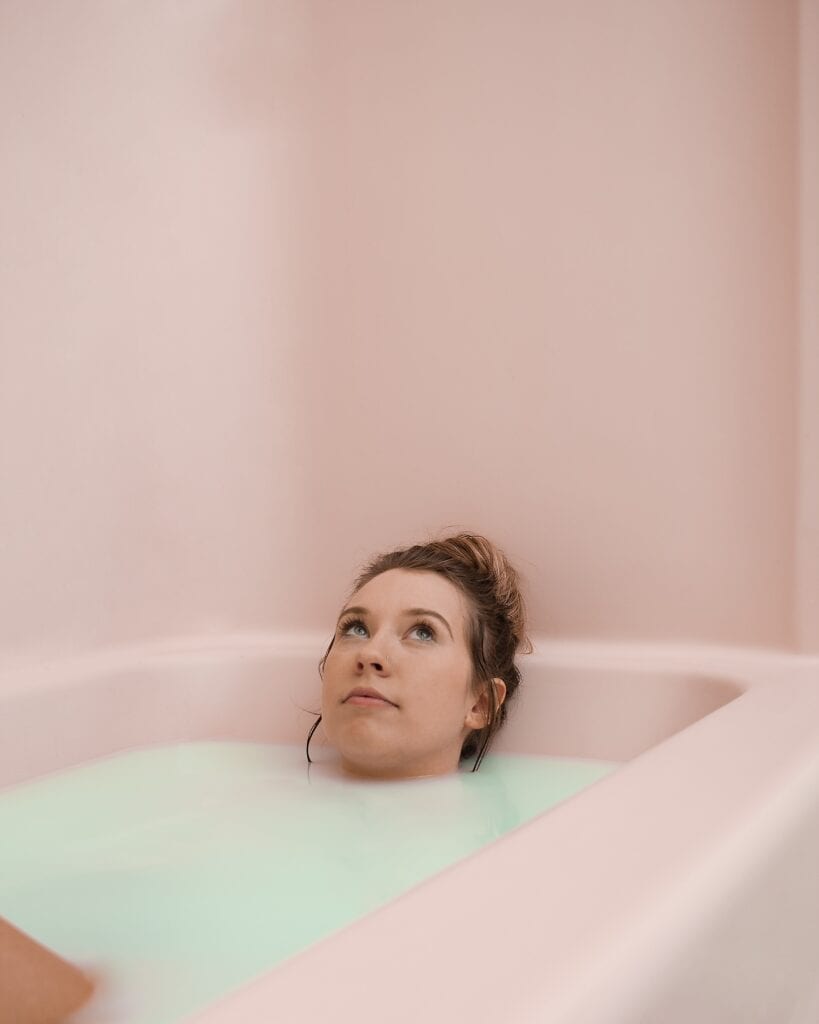
Afraid of winter blues? – Transience and what we can learn from it
In the dark month of November, we in the team decided to take a closer look at the topic of #winterblues. After all, we all feel it: the days are getting shorter again, the light conditions darker and the mood in the office sinks.
Often we would also like to crawl under the covers and not go out at all. It feels like we have less energy and everything becomes duller. But why is that? And what is nature trying to tell us? Or are we all simply in a seasonal depression?
These questions have been on our minds for the past few weeks, so in this first article we’ll write about what the transition into the dark season is all about. In the second article, we will then take a closer look at your body and mind and the effects that autumn and winter have on them. In the third article, we will give you concrete everyday tips on how to survive the dark season and start the new year stronger.
We are sure that after reading this article, your days won’t seem so dull anymore and you will also see the beautiful sides.
What do the gods of Greek mythology have to do with the fall?
Well, to understand man, nature, and their interaction, it often helps to look into Greek mythology.
According to the story, Hades, the god of the underworld, needed a new wife. Of course, this could not be just any woman, but a beautiful goddess from a good family, so he fell in love with the daughter of Zeus and Demeter, who at that time was called “Kore”.
Since charm was not one of Hades’ strengths, but he was all the better at enforcing his wishes by force, he abducted Kore into the underworld without further ado. For the people on earth, this was, of course, a catastrophe, since Kore, as the goddess of fertility, was responsible for the blossoming of nature. Thus, drought reigned on earth and nothing grew anymore – people had to starve.
As a good father should, Zeus tried to save his daughter and managed to do so with the help of a compromise. The compromise was as follows: For the first three months of the year, Kore would rule the underworld with Hades under the name of Persephone, and for the rest of the year she would be allowed to spend time with her mother on Earth so that nature could flourish.
This tale is so much more than a myth. It teaches us about the autumn and winter principle of metamorphosis and rebirth, which symbolizes the descent into darkness before the ascent into light. You can observe this principle in every seed in nature that makes its way through the dark earth to rear its head toward the light in the spring.

Nature in its annual metamorphosis: When animals and plants also make themselves comfortable
Once you have internalized this principle, you will be able to observe it everywhere outside. Most strikingly, the autumn and transition to winter probably meets us in the trees.
The days are getting shorter, temperatures are dropping and there is less light available. Less light also means that trees and plants cut back on photosynthesis – the process by which carbon dioxide from the air and water are converted into glucose and oxygen.
Chlorophyll, the green pigment in the leaves, is the main help here. The less light available, the faster the leaves change color and fall off. A birch can lose up to 28 kilograms per year, while a horse chestnut produces an average of up to 25 kilograms of foliage.
So the trees simply let go of old things, rest in winter and gather strength for a new beginning in spring. Many animals do the same. The hedgehog and some other rodents, for example, go into hibernation, during which the body temperature is slightly lowered and functions are thus reduced to a minimum.
Squirrels sleep through only a small part of the winter, but still maintain a certain amount of rest. So they don’t run around quite as vigorously and instead gather a supply to hide. Fish also have a tactic for surviving the winter. As soon as it gets colder outside, their temperature drops and their blood cools. They too are then more sluggish and look for hiding places. If their body temperature drops below a certain degree, they fall into a cold torpor from which they do not awaken until spring.
The Scorpio archetype symbolizes change and new beginnings within us
As you surely know, the sun moves into the zodiac sign of Scorpio from October 24 – that’s why people who have their birthday in the following month are popularly given the zodiac sign of Scorpio. From this we can also read a lot, after all astrology puts astronomical constellations and processes on earth into a relationship – according to the principle “It is in the big, as in the small – As above, so below”.
So what does the archetype of Scorpio in autumn tell us about the processes on earth and thus also in ourselves? Symbolically, this archetype stands for change, transformation and rebirth.
Like Persephone to the underworld, we are to use this phase to descend into the depths of our being and confront unpleasant feelings such as envy, jealousy, greed, anger or grief.

If we also meet our inner shadow sides in this dark season and bring them into consciousness, we can transform them and free ourselves from the pressure that emanates from them. And suddenly they don’t scare you so much anymore.
One thing should be noted at this point: energy cannot be destroyed, it can only transform. This also applies to our emotions, which we carry around with us over the course of a year. They lurk in our cells, give us a hard time and are finally waiting to be seen during this time.
This will not always feel good at first, however, once we have redirected these energies, it becomes possible for us to productively integrate them into our daily lives and allow them to flow into other forms of expression.
Scorpio with its sting thus reminds us that darkness, depth and change are also necessary for healthy development. It lures us out of the reserve, so that we question and let go of old structures, retire for introspection, in order to soon be able to rise in new splendor like the Phoenix from the ashes.
Is there time for retreat in an optimized society?
Whether Greek mythology, nature or astrology – all’ these considerations show us that autumn is a time of retreat and inward reflection.
Psychologists also agree that it is quite normal for us to feel more listless and slower in the transition from fall to winter. The one or other low mood does not equal winter depression, as it is so often misused.
This “low” can even be explained medically, which we will discuss in more detail in the next article. At this point, however, it can already be said: The lack of light in the transition period described also changes our hormones.
The “sleep hormone” melatonin in particular is released more strongly than usual and therefore makes us tired more quickly. At the same time, however, the release of serotonin, our “happiness hormone,” also decreases. It’s no wonder that at this time of year we sometimes want to hang our heads and hunker down like a hedgehog.

All this would basically be no problem at all if we had the opportunity to retreat and recharge our energy reserves during this time. Many Nordic cultures show us how. They allow themselves a “social hibernation” during this time and use the break for introspection.
Unfortunately, the only problem is that in our society these natural tendencies are turned into symptoms. So if you are lazier than usual in the fall and winter and have mood swings, you quickly suffer from the aforementioned “winter depression”.
Almost all employers expect us to perform as we do during the other months. Yet the time for self-reflection during this phase is a natural function of consciousness and very important for all of us. Maybe one or the other boss should read this too.
Instead, what is it that we so desperately need during the dark season?
Instead of continuing to push ourselves to our limit during this dark time of year and challenging the body to perform the same with less energy, we should have the courage to dive into our own darkness.
The fact that the days are getting shorter and the nights longer is an invitation to face the darkness of life and to confront our own fears – and thus our ego and our subconscious. In this way, we can prepare ourselves sustainably for the rebirth that awaits us all just three months later.
We can practice seeing fall and winter for what it is: a time of change, of saying “goodbye,” of letting go of inner resistance, and of inner cleansing.
It is the time when we can retreat to our houses and apartments with a cup of cocoa without a guilty conscience, cancel appointments and let old issues rise to consciousness once again: Which thoughts are ready to be let go and which still lie heavy on one’s chest?
Above all, however, it is also a time for gratitude and retrospection. We can ask ourselves what gave us particular pleasure last year and what difficult phases allowed us to grow. In this way, we give both body and mind the rest they need to meet the light with all our strength in spring and start a new cycle all over again.
So, what will you do for yourself on cold days?
We hope that with this article we could inspire you to retreat and dedicate time to yourself on cold and dark days. It won’t always be easy during this time of metamorphosis – but it doesn’t have to be.
Or to put it in Richard Bach’s words, “What is the end of the world for a caterpillar, the master calls a butterfly.”
So get involved in this time of change – with all your senses and the associated feelings. In order to be able to start again strengthened in the spring. With everything that has remained with you then.
Your Humanoo Team